Solar Charge Controllers
- They allow PV to operate at its maximum power point voltage
- Controller drops this down to battery voltage
- Current is boosted by doing this
- So panels deliver full power to battery
- Panel voltage doesn’t need to match battery voltage
- Can use high voltage string configurations
- Smaller cable can be used
- PV can be sited further from battery
- Better for larger systems (>200Wp)
- 60 cell panels are better value than 36 cell 12V panels so the extra power delivered can justify extra cost of the controller even for 12V systems
-
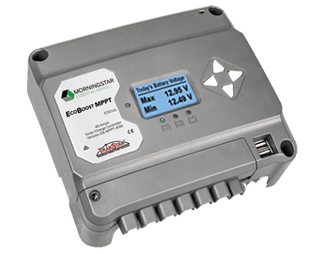
Morningstar EcoBoost MPPT™
The EcoBoost MPPT™ solar charge controller brings Morningstar's proprietary TrakStar Technology™ to their Essentials controllers and accessories.
-
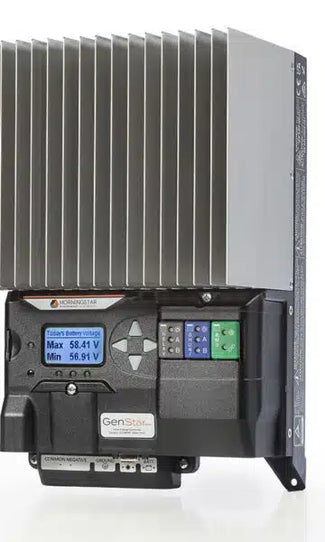
Morningstar GenStar MPPT
The new GenStar MPPT is the first model in Morningstar’s new Integrated Series and represents the industry's first truly "smart" controller with all built-in intelligence, communications, and control features instead of requiring additional external components.
-
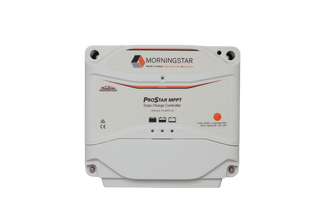
Morningstar ProStar MPPT
The Prostar MPPT™ solar charge controller uses TrakStar Technology™ for advanced maximum power point tracking (MPPT) battery charging. Suitable for Lithium, Nickel Cadmium, and Lead Acid battery types.
-
MPPT Charge Controllers
Shop all - Solar panel voltage must match battery voltage (36 cells)
- Panel operates at battery voltage
- Tapers charge into battery as it gets charged
- Current into battery is limited to maximum power point current of panel
- Low Cost
- Simple and reliable
- Suitable for smaller systems (<200Wp)
- Can include load control features
- Optional displays (built in or remote)
-
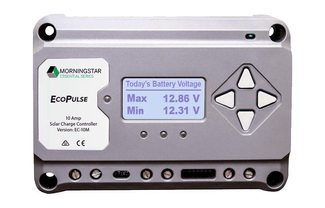
Morningstar EcoPulse™
Morningstar's EcoPulse™ is a pulse width modulation (PWM) solar charge controller within the Morningstar Essential Series™ which provides essential off-grid battery regulation functions for solar PV systems.
-
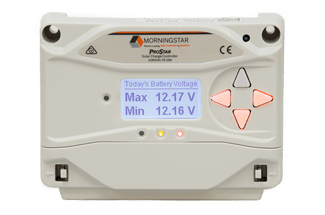
Morningstar ProStar
These tropicalised 15 & 30A controllers provide longer battery life and improved system performance. LED's indicate battery status and faults. Digital metering shows voltage & current plus 9 different controller status parameters. Automatic battery equalisation or can be used with sealed and gel batteries. Includes a manual PV and load disconnect button. Versions for 12V, 24V or 48V systems.
-
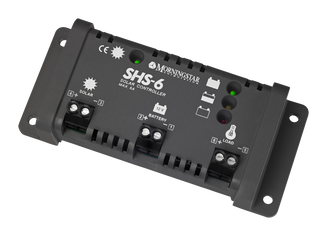
Morningstar SHS
These low-cost controllers are ideal for small lighting systems. High reliability with built in electronic fuses. Circuit boards are coated for protection against humidity & insects. LED's indicate battery level and system status. 12V.
-
PWM Charge Controllers
Shop all -
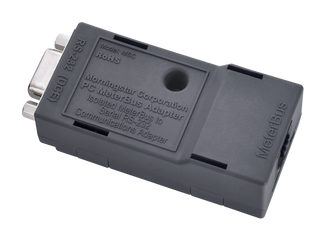
Morningstar Communication Adaptors
MS-MSC Morningstar’s PC MeterBus Adapter converts a controller’s MeterBus RJ-11 to a standard RS-232 serial connector for connection to a PC or other equipment. It may be used with any Morningstar controller or inverter equipped with a meter connection that does not also already have a RS-232 port. Communications link enables monitoring and logging of data as well as customizing of set points.
-
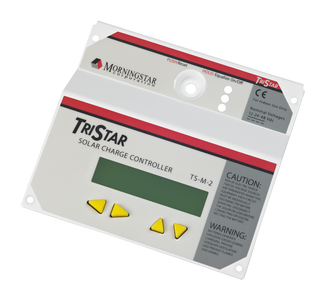
Morningstar Displays
Digital displays to provide system and controller information, data logging, alarms and errors.
-
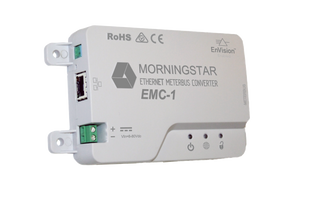
Morningstar Ethernet MeterBus Converter
The Ethernet MeterBus Converter (model: EMC-1) provides the data and communications connection for Morningstar devices, between themselves, with surrounding systems, and with the outside environment through the internet. It’s simple to connect to any compatible Morningstar product equipped with an RJ-11 Meterbus port to enable remote monitoring, custom programming, and access to future cloud-based data services.
-
Charge Controller Accessories
Shop all
MPPT Charge Controllers
These are needed for use with larger 60 cell PV panels in order to match the PV output voltage with battery voltage.
They allow a PV array to deliver up to 30% more power to a battery than it would if it were connected directly to the battery.
The current from PV modules varies with sunlight levels but is fairly constant over a wide range of voltages. This means they can operate at higher voltages than the voltage of the battery bank which they are charging.
Advantages
Choosing an MPPT charge controller
The following tools are useful for sizing the correct controller:
PWM Charge Controllers
These work by gradually reducing (or tapering) the flow of energy into the battery as a full charge is reached so achieving a more complete charge. Very fast solid state switching technology is used for this, known as pulse width modulated (PWM) control.








